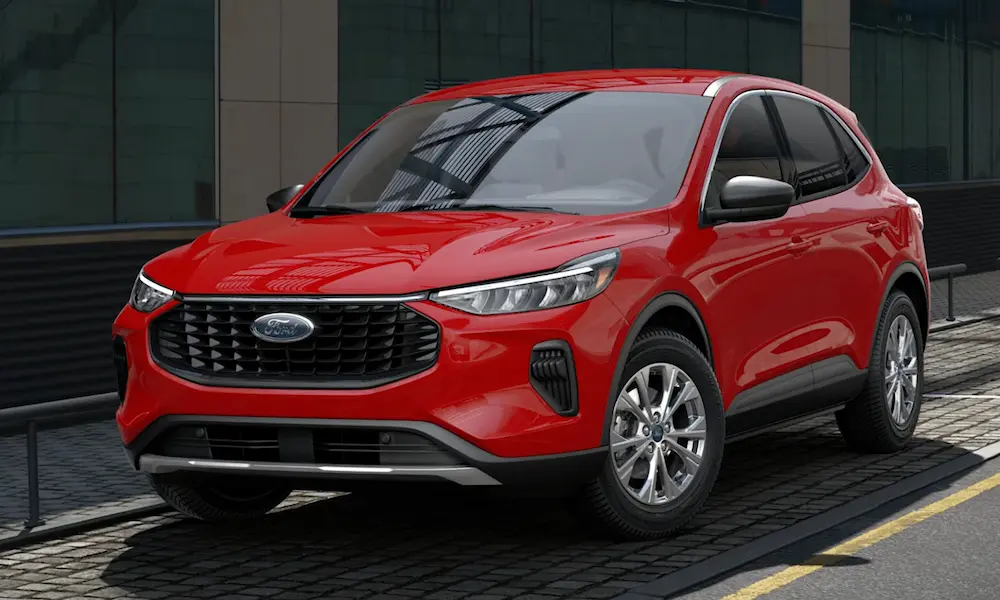Having trouble with your Ford F150 not starting and hearing no clicking noise? This issue often points to problems like a faulty neutral safety switch or a remote starter kit malfunction that affects the security system. Discover the common causes and practical solutions to get your F150 up and running. Dive in to find the fix that suits your situation and drive away stress-free!
Understanding the Ford F-150 Starting System
When your Ford F-150 won’t start and makes no clicking noise, it can be frustrating. Getting to know the components and workings of the starting system can help in diagnosing and fixing the problem.
Components Involved in Starting
The starting system of your Ford F-150 includes several key parts. The battery provides the necessary power to start the vehicle. If the battery is weak or dead, your truck won’t start.
The starter and solenoid work together. When you turn the key, the ignition switch sends power from the battery to the solenoid, which then engages the starter to crank the engine.
The ignition switch is the part you interact with directly. It’s responsible for sending current from the battery to the starter. If the switch is faulty, power won’t reach the starter.
How the Starting System Works
When you turn the key or push the start button, the ignition switch activates. It allows electrical current to flow from the battery to the solenoid. The solenoid, in turn, energizes the starter motor.
As the starter spins, it engages with the engine’s flywheel. This action cranks the engine, allowing it to start running on its own.
Problems can occur if there is a loss of connection at any point, such as a weak battery or faulty ignition switch. Regular checks of these components help ensure your Ford F-150 starts smoothly. Keep an eye on battery health and look for signs of wear in the starter or solenoid to avoid issues.
Common Reasons for No-Start Without Clicking Noise
When your Ford F150 won’t start and there’s no clicking noise, several potential issues could be at play. Identifying these can help you get your truck back up and running.
Battery Issues
A dead or bad battery is a common reason for no-start situations. Even if you don’t hear a clicking noise, this can still be the culprit. Check if your lights and electrical components work. If they’re dim or not working, your battery might be drained or dead.
Inspect the battery cables for any corrosion or loose connections. Tightening or cleaning these can sometimes fix the problem. If the battery is old or has visible damage, consider testing it. You might need to replace it if it’s no longer holding a charge properly.
Starter Motor Problems
The starter motor engages the engine when you turn the key. If it’s faulty, you might not hear any sound when trying to start your truck. A faulty starter motor could be due to normal wear and tear, bad electrical connections, or internal failures.
If the starter motor has failed completely, replacing it might be necessary. You can diagnose a bad starter by checking if the starter solenoid is functioning. Sometimes, tapping the starter lightly can help, but this is only a temporary fix. For lasting results, consult a professional for a more in-depth inspection.
Electrical Connections and Fuses
Loose or corroded connections can prevent the electrical system from functioning properly, leading to starting issues. Check all related fuses and relays to ensure they’re intact and functioning. A bad fuse in the starting system can stop power from reaching the starter.
Inspect the battery cables and connections to make sure they’re secure. Clean off any corrosion around the terminals using a wire brush. Replace any damaged wiring or connectors. Ensuring good conductivity can often resolve no-start issues without causing any clicking sound.
Ignition System Failures
The ignition switch is a critical component in starting your truck. If it’s faulty, your vehicle might not start, and you won’t hear a clicking noise. Signs of a faulty ignition switch include dashboard lights not turning on and the steering wheel being locked.
To test this, try turning the key and see if other components like the radio or lights activate. If not, the ignition switch might need attention. The fuse associated with the ignition should also be checked, as a blown fuse can prevent the ignition system from operating correctly. Repairing or replacing the switch might be necessary to solve the problem.
Step-by-Step Troubleshooting
When your Ford F150 doesn’t start and you hear no clicking noise, there are several key areas to inspect. This guide will walk you through checking the battery, starter, electrical connections, and the ignition system to help identify the problem.
Checking the Battery
Start by examining the battery voltage. A weak battery often results in no sound when starting. Use a multimeter to check the voltage. The reading should be around 12.6 volts when fully charged.
If the voltage is low, try a jump-start. Make sure the battery terminals are clean and free of corrosion, as this can interfere with current flow. You can use a wire brush to clean them if necessary.
Use a test light to ensure the battery can send power as needed. If the battery is dead or damaged, consider replacing it.
Inspecting the Starter and Solenoid
The starter motor and starter solenoid play crucial roles in starting your car. If there’s no clicking noise, the solenoid might be faulty or the starter relay could be bad.
First, check the connections to these components. Loose or corroded wires can prevent them from operating properly. Tighten any loose connections and clean any corrosion present.
Use a multimeter to test the function of the starter. If the starter isn’t working, it may need a replacement. You should also inspect the solenoid for faults, as a bad solenoid can stop the car from starting.
Testing Electrical Connections and Fuses
Faulty electrical connections can also cause starting issues. Begin by checking all fuses related to the ignition and starter systems. A blown fuse can halt the car’s starting process.
Inspect the wiring for any visible damage or wear. Testing connections with a multimeter or a test light will help identify where the flow of electricity might be obstructed.
If any component isn’t receiving power, trace the wiring back to find the fault. Replace any damaged wires or fuses you discover.
Evaluating the Ignition System
The ignition system could be to blame if your Ford F150 won’t start. An issue with the ignition switch or key can prevent the engine from turning over.
Try turning the key in the ignition while pressing the brake pedal. Listen for any sound. If nothing happens, the switch might be defective.
Additionally, some F150 models come with a safety feature that may need resetting. Consult your vehicle manual for specific instructions related to your model.
When to Call a Professional
Sometimes, fixing your Ford F-150 when it won’t start can be tricky. Knowing when to turn to professional help can save time and effort. Consider professional assistance if you’re dealing with complex electrical issues or if a starter motor replacement seems necessary.
Complex Electrical Issues
If you encounter electrical problems beyond simple checks, it’s wise to contact a professional. Complex wiring or faulty electronic components could be the cause. Trying to fix these by yourself might lead to more damage.
Professional mechanics can diagnose issues with tools like advanced diagnostic equipment. They can pinpoint electrical failures efficiently. If you’re uncertain about handling wires or the truck’s electronics, avoid the risk. Seeking a trusted technician can help you get back on the road safely.
Starter Motor Replacement
A bad starter motor might be why your truck isn’t starting. Replacing it yourself can be daunting. Professionals have the expertise to identify whether the starter motor is truly at fault.
If your Ford F-150 shows no signs of starting and there’s no clicking noise when turning the key, it might be time for a replacement. Installing a new starter motor requires knowing the exact model and ensuring proper connections, which a skilled mechanic can ensure. Calling a professional ensures your truck gets the right part and is installed flawlessly, preventing further starting issues.
Preventive Measures and Maintenance Tips
Keeping your Ford F150 in top shape requires regular care of key components like the battery, starter, and electrical system. Proper maintenance can help prevent starting issues and prolong the life of your truck.
Regular Battery Maintenance
The battery is the heart of your truck’s electrical system. Regular cleaning of the battery terminals can prevent corrosion, which can impede the flow of electricity. You’ll want to check the battery connections to ensure they’re tight and secure.
A multi-meter can help you measure the battery’s charge level. If the charge is low, consider charging it or replacing it if it’s old. During cold months, check the battery more often, as low temperatures can affect its efficiency.
Starter and Solenoid Care
The starter and solenoid are crucial for turning your truck’s engine. Regularly inspect the starter connections for signs of wear or damage. Loose connections could prevent your vehicle from starting.
Perform a visual check for rust or buildup on the solenoid. You might need to clean it with a wire brush or replace it if worn out. If your F150 shows symptoms like a click without starting, it could be due to the solenoid.
Electrical System Upkeep
Your truck’s electrical components are vital for starting and everyday functions. Inspect wires and fuses regularly for any signs of wear or burnt out fuses. Replacing old wires and broken fuses can prevent unexpected issues.
Check lights and dashboard indicators often to ensure they function properly. Regular diagnostics can help catch electrical problems before they become more severe. Consider using a digital multimeter to gauge the health and functionality of your truck’s electrical system. Proper upkeep can help ensure your truck runs smoothly.















